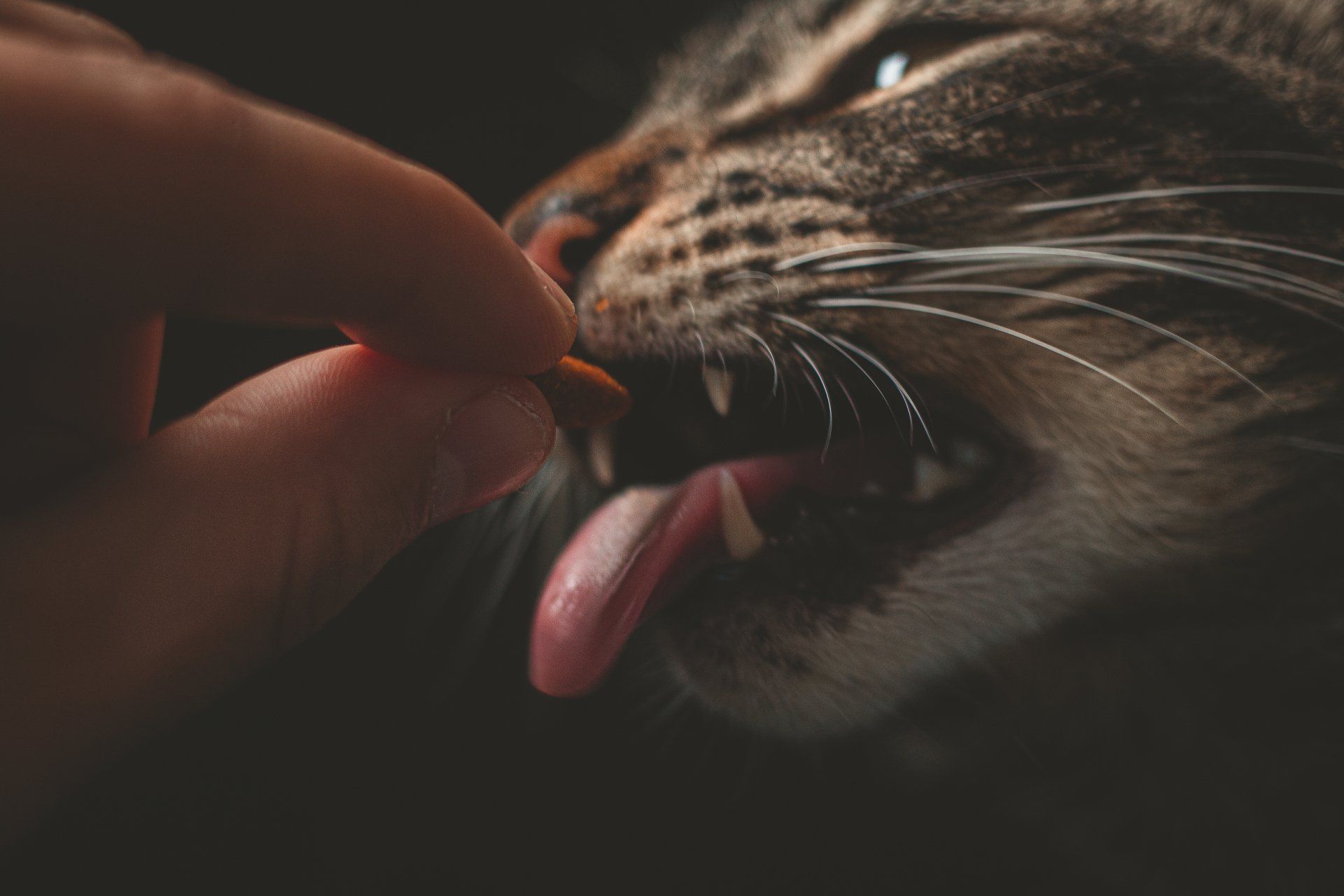Get in touch
555-555-5555
mymail@mailservice.com

Dental disease in Dogs and Cats
Periodontal disease, or disease affecting the teeth and surrounding tissues, is one of the most commonly diagnosed health issues in dogs and cats. Even young pets can have significant periodontal disease and early action in addition to lifelong care can help keep the teeth and gums of our animals healthy and pain free.
Periodontal disease begins with inflammation of the gum tissue, or gingivitis. Gingivitis is caused by the bacteria in plaque, which is a film made of bacteria and saliva. Plaque is what makes our teeth feel fuzzy after a night of sleep before we brush our teeth. Plaque can be removed if brushed within 24 hours; otherwise it attaches to the tooth. Eventually, plaque becomes mineralized by its contact with saliva and turns into calculus or tartar.
Over time, the kind of bacteria in plaque changes from a healthy to an unhealthy population and works its way under the gum tissue. The unhealthy bacteria make toxins and other damaging products, which damage the tissues themselves and cause the animal’s immune system to cause more inflammation and damage.
As periodontal disease progresses, inflammation of the deeper, tooth-supporting structures like bone occurs and irreversible damage can happen. As a result, affected teeth require advanced dental care or extraction to prevent infection and preserve comfort. Without intervention, secondary effects like loose teeth, jaw fractures, bone infections, or oronasal fistula formation (an abnormal connection between the oral and nasal cavities due to bone loss typically around the upper canine or fang teeth) can occur.
The relationship between periodontal disease and diseases in the rest of the body has not been clearly shown. However, there are studies that suggest that periodontal disease may be linked with liver and chronic kidney disease, heart changes, and difficulty managing diabetes.

Diagnosis
Periodontal disease can be at least partly diagnosed with a thorough oral exam, which is typically done at your dog or cat’s annual wellness exam. Your veterinarian will look for evidence of plaque, calculus, gingivitis, and the secondary effects like gum recession, tooth root exposure, and evidence of infection. Periodontal disease can be tricky to diagnose on an awake pet - a more thorough exam with dental x-rays done under anesthesia are necessary to truly truly know the extent of disease. Some pets with relatively healthy mouths can have nasty disease hiding!
Treatment
Periodontal disease is addressed by performing a Comprehensive Oral Health Assessment and Treatment (COHAT). A COHAT requires general anesthesia for a full oral exam, teeth cleaning and polishing, x-rays of all teeth, and any indicated treatments like tooth extractions. Some dogs require dental work much more frequently than others; often there is a breed predisposition for periodontal disease. Small breed dogs are especially predisposed.
Prevention
Preventing dental disease can be achieved in a wide variety of ways. The most important part of home dental care involves daily tooth brushing. As previously mentioned, plaque adheres to the surface of teeth after 24 hours, so brushing before that happens is crucial. Special diets, high quality dental chews, and antiseptic rinses are all helpful as well. When choosing oral care products, it is recommended to follow the recommendations of the Veterinary Oral Health Council (VOHC).
Following the recommendations of your veterinarian and starting home dental care as early as possible will lead to ideal outcomes. Prevention of oral pain is the ultimate goal for our pets and unfortunately they often don’t tell us when something is wrong, even if it hurts.



